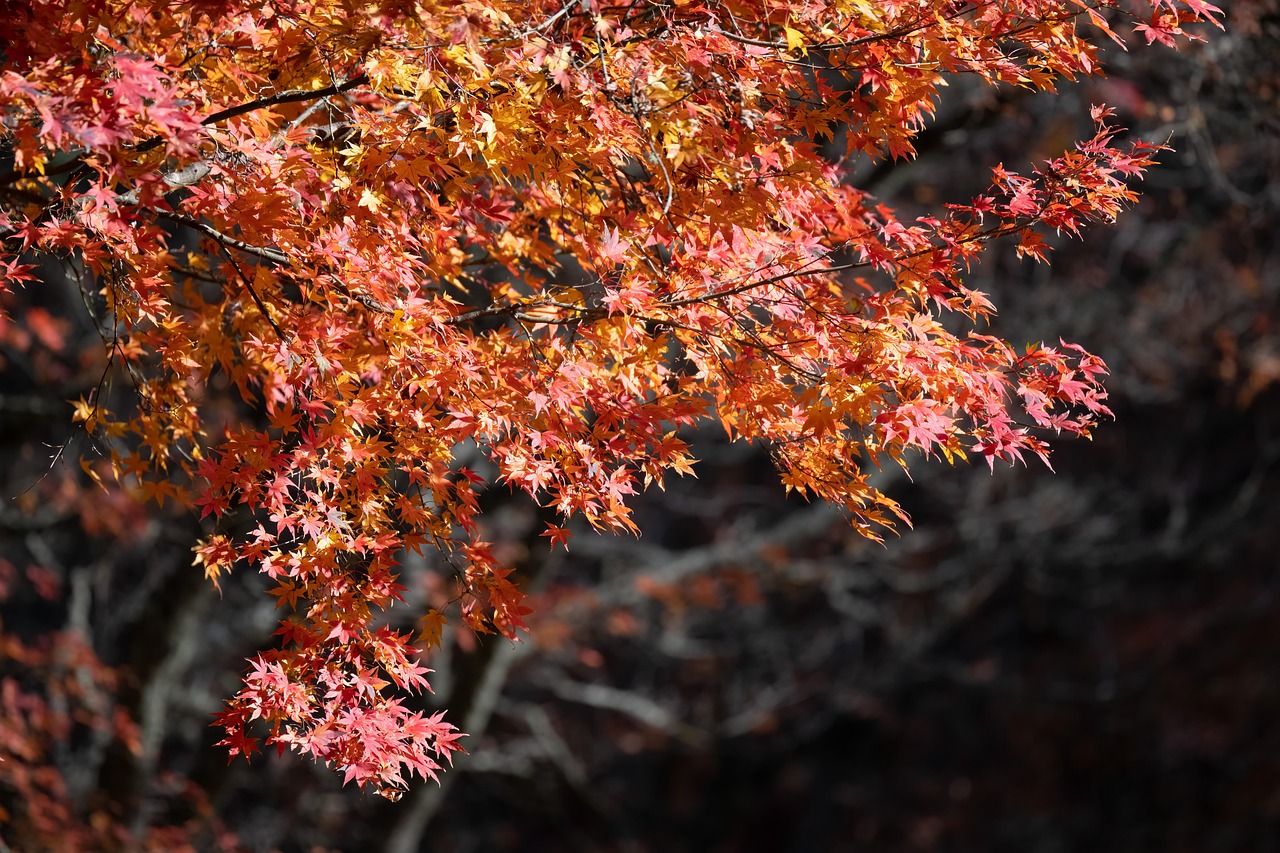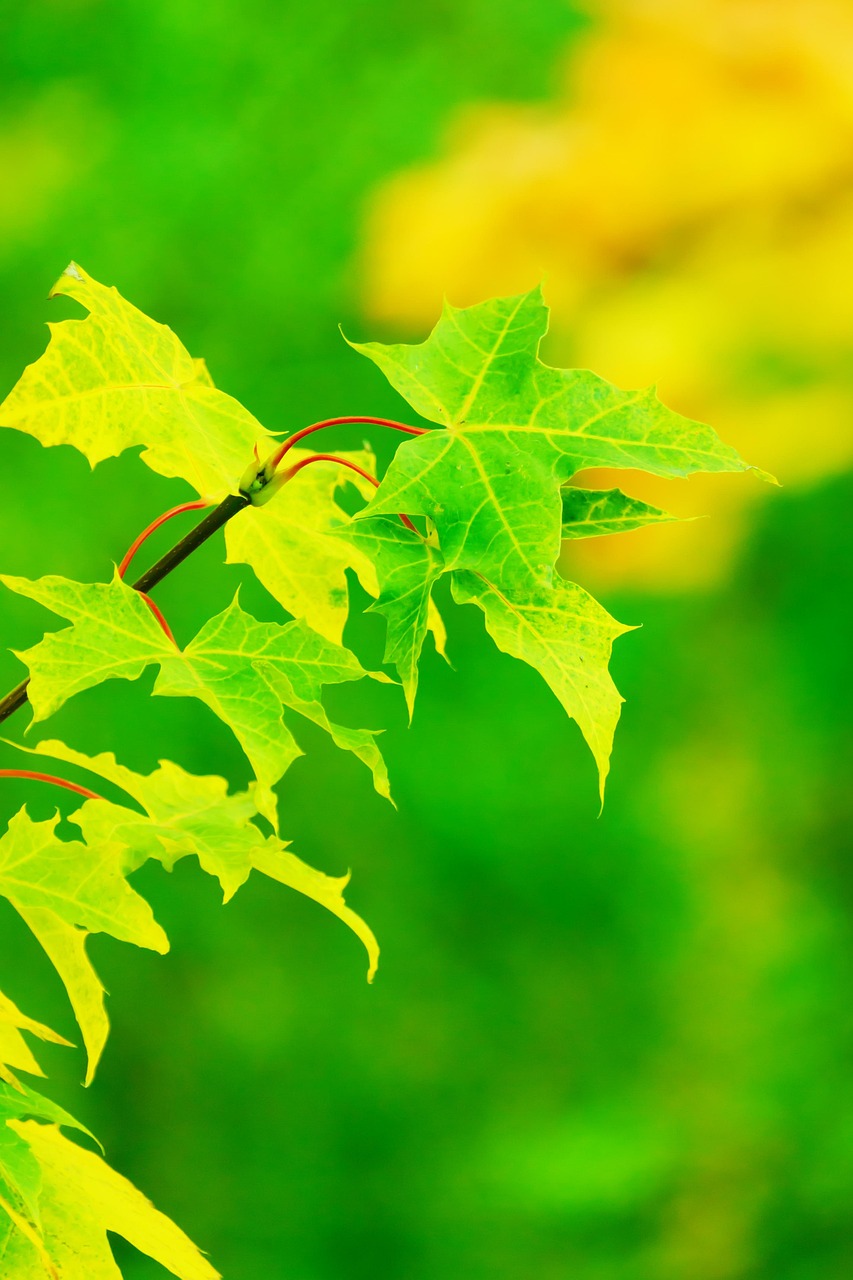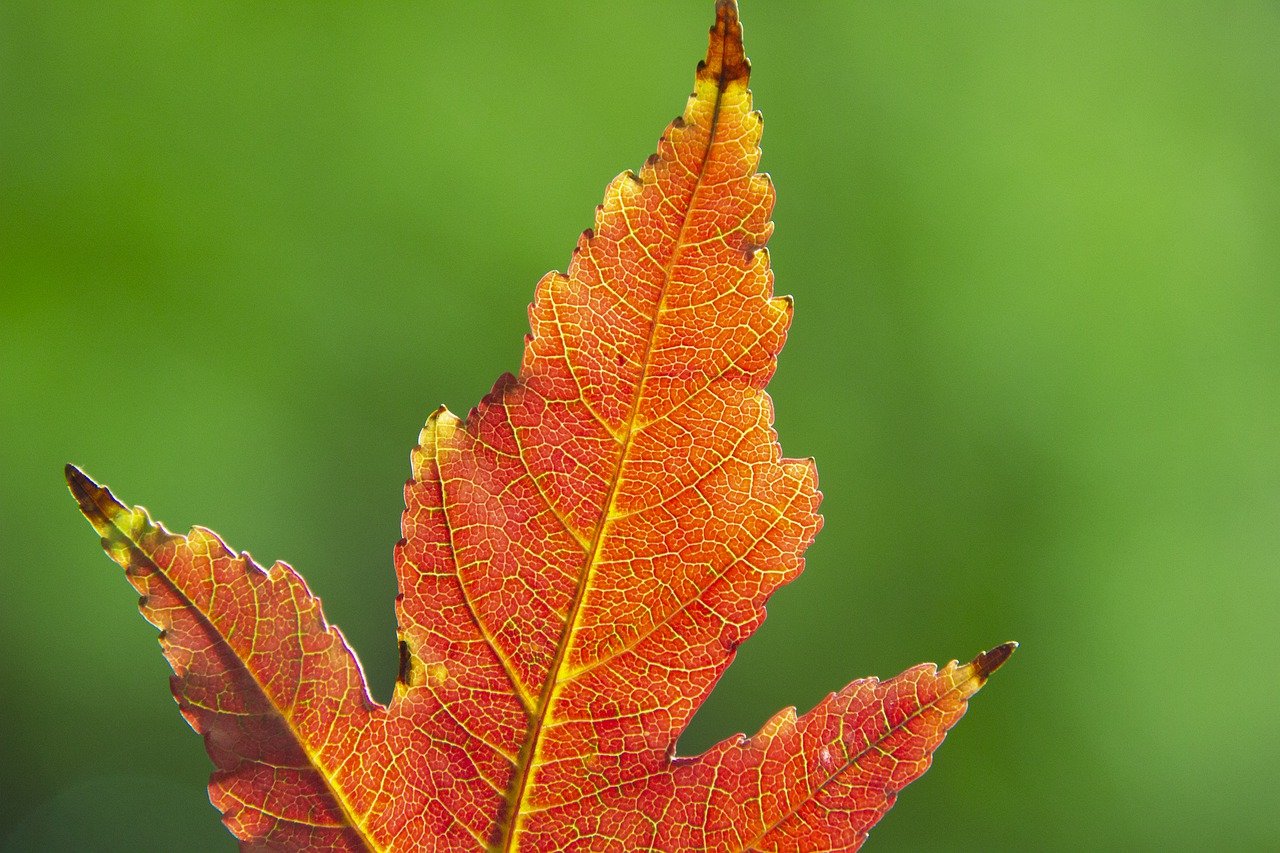Identifying maple tree look-alikes involves recognizing key characteristics that differentiate them from similar species. Notable trees that resemble maples include the sweetgum, sycamore, and boxelder. Each has distinct leaf shapes, growth patterns, and fruit types that can help in accurate identification.
The maple tree is a common sight in many landscapes, known for its vibrant fall foliage and distinctive leaf shape. However, several other tree species can easily be confused with maples due to similarities in their leaves and overall appearance. Understanding these look-alikes is essential for gardeners, landscapers, and nature enthusiasts alike. Proper identification can help in choosing the right tree for planting or in managing existing ones in your landscape.
Maple trees belong to the genus Acer, which includes around 150 species worldwide. They are primarily characterized by their lobed leaves and unique samara fruit, which resembles a helicopter blade when it falls. The beauty of maples attracts many to plant them, but this also leads to confusion with other species that share similar traits.
Common Maple Look-Alikes

Several tree species can easily be mistaken for maples. Below are some of the most common look-alikes and their distinguishing features.
| Tree Species | Key Characteristics |
|---|---|
| Sweetgum | Star-shaped leaves with five to seven lobes; spiky seed balls. |
| Boxelder | Compound leaves with three to five leaflets; greenish twigs. |
| Sycamore | Large, lobed leaves resembling maples; mottled bark with peeling patches. |
Each of these trees has unique features that differentiate them from true maples. For instance, sweetgum leaves are star-shaped rather than palmate, which is typical of maples. Boxelders often have compound leaves rather than simple lobed ones. Sycamore trees, on the other hand, have larger leaves and distinctive bark that can help distinguish them from maples.
Additionally, understanding the growth habits of these trees can assist in identification. Maples tend to have a more upright growth pattern, while sweetgums and sycamores can develop a wider canopy. Notably, boxelders may display a more bushy appearance due to their multiple stems.
It is also helpful to observe the flowering and fruiting patterns of these trees. Maple trees produce samaras that spin down when released, while sweetgums have spiky seed pods. Boxelders bear clusters of small green flowers that later develop into winged seeds resembling those of the maple.
Importance of Accurate Identification
Identifying maple look-alikes is crucial for several reasons. First, it can prevent mistakes in landscaping or gardening choices. Planting the wrong species can lead to unexpected growth patterns or maintenance challenges. Second, understanding the differences helps in recognizing tree health issues specific to each species. Lastly, accurate identification contributes to better ecological knowledge and biodiversity conservation.
In summary, recognizing maple tree look-alikes requires attention to detail and an understanding of each species’ unique characteristics. By familiarizing yourself with the signs of these similar trees, you can enhance your ability to identify them correctly and appreciate the diversity within your local environment.
Distinguishing Features of Maple Look-Alikes
To effectively identify maple look-alikes, it is essential to delve deeper into their distinguishing features. Observing characteristics such as leaf shape, bark texture, and fruit types can provide significant clues in differentiating these species from true maples.
Leaf Characteristics
The leaves of trees are often the most recognizable feature. Here are some specifics to consider:
- Maples: Typically have palmate leaves with three to five lobes. The leaves are broad and have a smooth margin.
- Sweetgum: Leaves are star-shaped and can have five to seven pointed lobes. They exhibit a serrated margin and turn different colors in fall.
- Boxelder: This species has compound leaves, usually with three to five leaflets per leaf. The leaflets are serrated and the overall structure resembles that of a hand.
- Sycamore: Leaves are large, often exceeding a foot in width, with three to five lobes and a rough surface. The edges can be slightly serrated.
By examining these leaf distinctions, one can easily narrow down the identification of a tree. It is beneficial to observe the leaves during different seasons, as some characteristics may change with the weather.
Bark Texture and Color
Bark can also be a significant factor in distinguishing between maple trees and their look-alikes. Here are some characteristics to note:
- Maples: Generally have smooth bark that becomes ridged and furrowed with age. The color can vary from grayish-brown to reddish-brown.
- Sweetgum: Features a distinctive, rough bark with deep fissures. The bark is dark brown or gray and has a somewhat scaly appearance.
- Boxelder: The bark is light gray and relatively smooth when young but becomes more furrowed as it matures. It often has an irregular pattern.
- Sycamore: Known for its unique mottled bark, which peels off in patches to reveal a lighter inner bark. This gives it a striking appearance.
Observing the tree’s bark can provide immediate clues regarding its species. Differences in texture and color can often be noted from a distance.
Fruit Types and Seed Dispersal
The type of fruit produced by each tree can also aid in identification. Here’s a closer look at their fruit characteristics:
- Maple: Produces paired samaras, which are flat seeds that spin as they fall, resembling helicopters. This unique shape aids in wind dispersal.
- Sweetgum: Bears spiky seed balls that contain small seeds. These pods often remain on the tree through winter.
- Boxelder: Produces clusters of winged seeds similar to maples but often in larger groups. These seeds are also dispersed by wind.
- Sycamore: Has round, spiky balls that contain many seeds, which break apart and disperse easily when mature.
The differences in fruit types not only assist in identification but also play a role in how each species propagates and spreads within its environment.
Growth Habits and Habitat Preferences
The growth habits and habitat preferences of these trees can also provide additional insights into their identification:
- Maples: Often found in diverse environments, including forests and urban areas. They can grow as large shade trees.
- Sweetgum: Prefers moist, well-drained soils and is commonly found in bottomlands and along streams.
- Boxelder: Thrives in disturbed areas and is often seen near water bodies due to its adaptability.
- Sycamore: Typically grows near water sources, such as rivers and lakes, due to its need for moisture.
Understanding these aspects of growth can help identify the surrounding environment that these trees thrive in, further solidifying their identification.
Cultural Significance and Uses
Each of these trees has its unique cultural significance and uses that also reflect their identity within various ecosystems:
- Maples: Renowned for their sap, which is harvested to make maple syrup. Their wood is also valued for furniture making.
- Sweetgum: The wood is used for furniture and cabinetry, while the tree itself has ornamental value due to its fall color.
- Boxelder: Though not as commercially valuable, it provides habitat for wildlife and is used for erosion control.
- Sycamore: Valued for its large size and shade; its wood is used in cabinetry and for making musical instruments.
Acknowledging the cultural significance of these trees enriches our understanding of their role within human society as well as within natural ecosystems.

Ecological Roles of Maple Look-Alikes
Understanding the ecological roles of maple tree look-alikes is essential for appreciating their contributions to the environment. Each of these species supports diverse wildlife and plays important roles in their respective ecosystems.
Habitat and Wildlife Support
Maple look-alikes provide critical habitat and food sources for various wildlife species. Here are some details on how each tree supports local ecosystems:
- Maples: Their foliage provides shelter for birds and insects. The seeds are a food source for squirrels and other small mammals. Additionally, the sap attracts various pollinators.
- Sweetgum: The spiky seed balls are a food source for birds and small mammals. The dense foliage offers nesting sites, enhancing habitat diversity.
- Boxelder: This tree is particularly important for many bird species that feed on its seeds. The leaves serve as food for certain caterpillars, which are essential to the life cycles of various butterflies.
- Sycamore: The large canopy provides nesting sites for birds and shade for smaller plants below. Its seeds attract various birds, while the bark serves as a habitat for insects.
By providing food and habitat, these trees contribute significantly to the biodiversity of their regions. They form part of complex food webs that sustain numerous species.
Soil and Water Conservation
Maple tree look-alikes also play vital roles in soil and water conservation. Their extensive root systems help prevent soil erosion and assist in maintaining soil health:
- Maples: Their roots stabilize the soil, preventing erosion, especially along riverbanks. The leaf litter enriches the soil as it decomposes.
- Sweetgum: Similarly, sweetgum trees help reduce erosion in moist areas. Their fallen leaves create a rich layer of organic matter that enhances soil fertility.
- Boxelder: This species grows well in disturbed areas, helping to stabilize soils in these locations. Their roots also help retain moisture in the ground.
- Sycamore: Sycamores thrive near water bodies and their roots help protect against flooding by absorbing excess water.
The ability of these trees to enhance soil quality and prevent erosion makes them valuable components of ecosystem management and restoration efforts.
Environmental Adaptations

The adaptability of maple look-alikes to various environmental conditions contributes to their success in different habitats. Understanding these adaptations can provide insights into their growth patterns and survival strategies.
Climate Tolerance
Each species exhibits varying degrees of tolerance to climatic conditions:
- Maples: Generally prefer temperate climates with adequate rainfall. They can adjust to different soil types but thrive in well-drained conditions.
- Sweetgum: More tolerant of wet soils, sweetgums are often found in floodplains and can withstand occasional flooding.
- Boxelder: Known for its resilience, boxelders can grow in a range of soil types and tolerate drought conditions better than some other species.
- Sycamore: Preferring moist environments, sycamores flourish near rivers and lakes where they can access abundant water resources.
This range of climate tolerances allows these trees to occupy diverse habitats, from urban landscapes to natural forests, significantly contributing to their ecological resilience.
Pest and Disease Resistance
The ability of these trees to resist pests and diseases is another important factor in their survival. Each species has developed unique adaptations that enhance its resistance:
- Maples: While susceptible to certain pests like aphids, many maple species have developed defenses against fungal diseases through thick bark and resilient leaves.
- Sweetgum: Generally resistant to most pests, sweetgums can withstand various environmental stresses thanks to their robust growth habits.
- Boxelder: Although they can suffer from boxelder bugs, these trees typically have fewer serious pest issues compared to others due to their fast growth rates.
- Sycamore: Known for their durability, sycamores tend to be less affected by pests due to their thick bark and high moisture requirements that deter some pest species.
This resilience not only contributes to the longevity of these species but also supports the ecosystem services they provide over time.
Cultivating Maple Look-Alikes in Landscaping
For those interested in landscaping, understanding how to cultivate these maple look-alikes can enhance both aesthetic appeal and ecological benefits. Here are some considerations for successful cultivation:
- Site Selection: Choose locations that match the specific needs of each tree. Maples thrive in well-drained soil, while sweetgums prefer moist areas.
- Spacing: Ensure adequate spacing between trees to promote healthy growth. This is particularly important for larger species like sycamores.
- Pest Management: Monitor trees regularly for signs of pests or disease. Early detection allows for effective management strategies to be implemented.
- Diversity Planting: Consider planting a mix of species to enhance biodiversity. This approach can create a more resilient landscape that supports various wildlife.
Cultivating
Cultivating maple look-alikes not only enhances the visual appeal of landscapes but also provides vital ecological functions. Proper care and attention to the specific needs of each species can lead to a thriving and sustainable garden or landscape.
Additional Considerations for Cultivation

Beyond the basic cultivation tips mentioned earlier, several other factors can contribute to the successful growth of maple look-alikes:
- Watering: Newly planted trees require regular watering until established. Consider the moisture needs of each species; sweetgums may need more frequent watering than maples.
- Mulching: Applying organic mulch around the base of the trees helps retain moisture, suppress weeds, and improve soil quality as it decomposes.
- Pruning: Prune trees during their dormant season to promote healthy growth and remove any dead or diseased branches. This practice also enhances air circulation within the canopy.
- Fertilization: While many trees can thrive in poor soil, applying a balanced fertilizer can support growth, particularly for young trees that are establishing themselves.
By paying attention to these additional factors, you can create an environment that supports the health and longevity of maple look-alikes in your landscape.
Landscaping Benefits of Maple Look-Alikes
Incorporating maple look-alikes into landscaping offers numerous advantages beyond aesthetics. Here are some key benefits:
- Shade Provision: Many of these trees provide ample shade during hot summer months, which can reduce energy costs associated with cooling buildings.
- Windbreaks: Strategically placed trees like sycamores can act as windbreaks, protecting properties from harsh winds and reducing soil erosion.
- Aesthetic Appeal: With their vibrant fall colors and unique growth habits, these trees enhance the beauty of any landscape throughout the seasons.
- Wildlife Habitat: By providing food and shelter, maple look-alikes support local wildlife populations, contributing to a balanced ecosystem.
These benefits illustrate the importance of integrating these species into landscaping plans, promoting both functionality and beauty in outdoor spaces.
Final Thoughts
The identification and understanding of maple tree look-alikes are essential for anyone interested in botany, landscaping, or ecology. Each species has its unique characteristics, roles, and environmental adaptations that contribute to biodiversity and ecosystem health. By recognizing these differences, individuals can make informed decisions about planting, maintaining, and appreciating these trees in their environments.
The cultivation of maple look-alikes not only serves practical purposes but also enriches our landscapes with beauty and ecological value. As urban areas expand and natural habitats diminish, integrating these trees into our landscapes becomes even more crucial. Through careful selection, planting, and management practices, we can ensure that both maples and their look-alikes continue to thrive for generations to come.
In summary, whether you are a homeowner looking to enhance your garden, a landscape architect designing public spaces, or simply a nature enthusiast aiming to deepen your understanding of tree species, recognizing and appreciating maple tree look-alikes will enhance your connection to the natural world.
